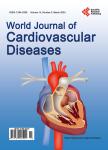The gene expression of adenosine receptors in the processes of contrast induced nephropathy in mouse kidney
The gene expression of adenosine receptors in the processes of contrast induced nephropathy in mouse kidney作者机构:Department of Pathology Louisiana State University Health Sciences Center Shreveport USA Department of Surgery Louisiana State University Health Sciences Center Shreveport USA
出 版 物:《World Journal of Cardiovascular Diseases》 (心血管病(英文))
年 卷 期:2013年第3卷第9期
页 面:561-568页
学科分类:1002[医学-临床医学] 100214[医学-肿瘤学] 10[医学]
主 题:Contrast Induced Nephropathy Adenosine Receptor Iodixanol
摘 要:Objective: Contrast induced nephropathy (CIN) is the third leading cause of hospital acquired renal failure. The mechanism of CIN is not fully understood. The objectives of this study were to investigate the expression changes of the four subtypes of adenosine receptors (A1AR, A2AAR, A2BAR, and A3AR) following administration of contrast media in mice. Methods: C57BL/6J mice were randomized into treatment and control groups. Iodixanol (IDX) was administered to two treatment groups through retroorbital injection at two different dosages, 0.75 gI/kg and 2.75 gI/kg. Phosphate buffered saline (PBS) was given to the control group. Mice kidneys were harvested at day 3 and day 7 after Iodixanol administration. Kidney injuries and function were evaluated according to Hematoxylin and eosin stain, Ki67 protein expression, and TUNEL assay of paraffin embedded kidney sections, and plasma creatinine assay. RNA and protein were extracted from the kidney specimens. A1AR, A2AAR, A2BAR, and A3AR RNA and protein level of the samples were assessed using qRT-PCR and Western blotting, with GAPDH as an endogenous control. Results: H&E staining showed no significant histopathology injuries after Iodixanol administration. No evidence of kidney injury and functional impairment was found. However, there was an increased number of A1AR, A2AAR, A2BAR, and A3AR RNA transcripts detected in the kidney 3 days after Iodixanol injection. The RNA levels in all the four subtypes of adenosine receptors were increased 2-3 fold in the day 3 specimens and back to normal at day 7. Western blot demonstrated that A1AR, A2AAR, and A3AR expression increased 1.5 to 2 fold at day 3 and day 7 following Iodixanol injection. A2BAR baseline expression was low in normal physiological conditions and no significant change was detected by Western blot. Conclusions: Iodixanol significantly increases adenosine receptors gene expression in mice. This suggests that adenosine receptors may play a role in the development of CI



